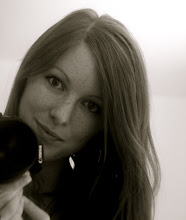The third day I was sent out on assignment with one of the main photographers for the day. As this was the day before the Royal Wedding, the day was packed with appointments of various primary schools and nurseries having street parties and competitions. We had 13 different photo ops to get to and spent most of the day driving to the different locations and trying to organise children in their wedding costumes to try and get them all into one shot.
I learned a few tips along the way, such as the fact that local newspapers generally want “strong, tight compositions with bright smiles” according to photographer Lloyd Ellington. He also told me some tips about writing the captions for the photographs, saying the main elements you need to get across are ‘who, what, where and why’. The main thing needed, he explained, is to be able to capture a photograph that tells the entire story in one image to draw the readers in. In the words of photojournalist Mark Hancock (1996), “an image has no age, language or intelligence limits."
He also said that a photo has to be able to tell the story on its own as much as possible. This echoes research in photojournalism that indicates that "pictures that explain elements of the text improve both comprehension and recall, while pictures that simply adorn the text do not improve comprehension or recall, and may even diminish them" (Garry et al., 2007, p. 996)
Here are some examples of some of the photos I took out on assignment:
This last photo was unplanned; we happened to see a house completely done up with union jack flags, streamers, bunting and even a union jack welcome mat so we decided to improvise. We went up to the house and knocked on the door, and luckily the owner of the house was happy to come out, also decked out in his England gear (including a union jack inflatable hat), and pose for some photos. This was a great opportunity since it showed that as a photographer, you can't just stick by the schedule but have to be ready to catch any opportunity that presents itself to you.
I thoroughly enjoyed this day, since it consisted a lot more of getting out and about, meeting new people and seeing more of the city. I found that even though this day should have been more tiring than the ones I spent sitting at the news desk talking on the phone or typing on the computer, I felt much more energetic and less drained at the end of the day. In this respect I preferred working in the photography department to the writing department, though I found challenges in both.
One of the challenges I found in doing the photography was that they generally wanted set up, posed shots with tight compositions and big grins. As my interest in photography is more in capturing what photojournalist Mark Hancock calls “the verb” or action moments of a story, this stretched my abilities as a photographer to learn to set up these compositions in a way that would fit with the brand identity of the newspaper; again, fitting with their style rather than my own. This is an important quality to learn working commercially for a publication, as from what I've seen, the most important thing is to fit to the publication's style and brand identity.
References:
Garry, Maryanne , Strange, Deryn , Bernstein, Daniel M. and Kinzett, Toni (2007) Photographs Can Distort Memory for the News. Applied Cognitive Psychology 21, pp. 995-1004.
Hancock, Mark M. (1996) What Is a Photojournalist? — http://markhancock.blogspot.com/1996/01/what-is-photojournalist.html accessed 8 May 2011
Thursday 19 May 2011
Subscribe to:
Post Comments (Atom)


No comments:
Post a Comment